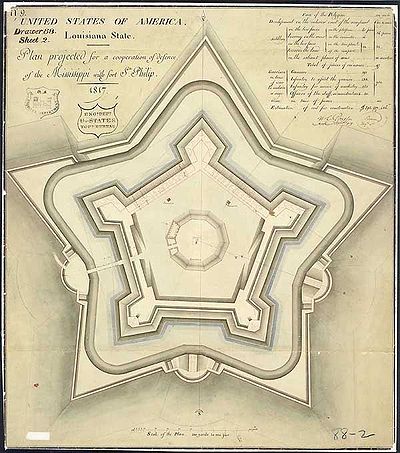Soon after the North began the blockade of southern ports they began planning for an attack on New Orleans, the largest city in the south. One of their first goals of the war was to capture the Mississippi River, and s of course New Orleans, at the foot of the river, was a necessary part of that. The commander that was chosen to lead the fleet was David Farragut, an old sailor. His adopted brother, David Porter, was to lead a fleet of 20 new mortar boats with a thousand shells each to subdue the Confederate fortifications. Then Farragut would run past the forts with the rest of the fleet. 18,000 Northern troops were also brought along to aid in the siege. The government was not always confident in its choice of Farragut. Even his brother, David Porter, said,
"Men of his age in a seafaring life are not fit for important enterprises, they lack the vigor of youth. He talks very much at random at times and rather underrates the difficulties before him without fairly comprehending them I know what they are, and as he is impressible hope to make him appreciate them also. I have great hope in the mortars if all else fails.The fleet arrived in position on April 16th.
 |
| Plan for Fort Jackson |
The most important Confederate defenses of New Orleans were Forts Jackson and St. Philip, on opposite banks of the Mississippi river south of the city. They were positioned on a bend in the river, so that their 170 guns would have plenty of time to fire on slow moving ships. Chains were stretched across the river, giving the forts time to destroy the ships while attempts were made to cut them. Every moment was precious for the Confederate defenders, because two monster ironclads were being built in New Orleans. The Louisiana, 260 feet long with 16 cannon and the Mississippi 20 guns and 3 inch thick armor. The Louisiana was very close to completion. Her engines were installed, but the engineers could not get them to work. She was towed down to the forts to lend her firepower until her engines could be got working. The Mississippi was waiting on her machinery, which was being finished by the Tredgar ironworks. When they finally arrived, she would be the fasted ship in naval history. If these two ships could be let loose among Farragut's wooden navy, the fleet could put up little defense. The forts just had to hold out long enough for the ironclads to be completed.
 |
| Fort St. Philip |



0 comments:
Post a Comment